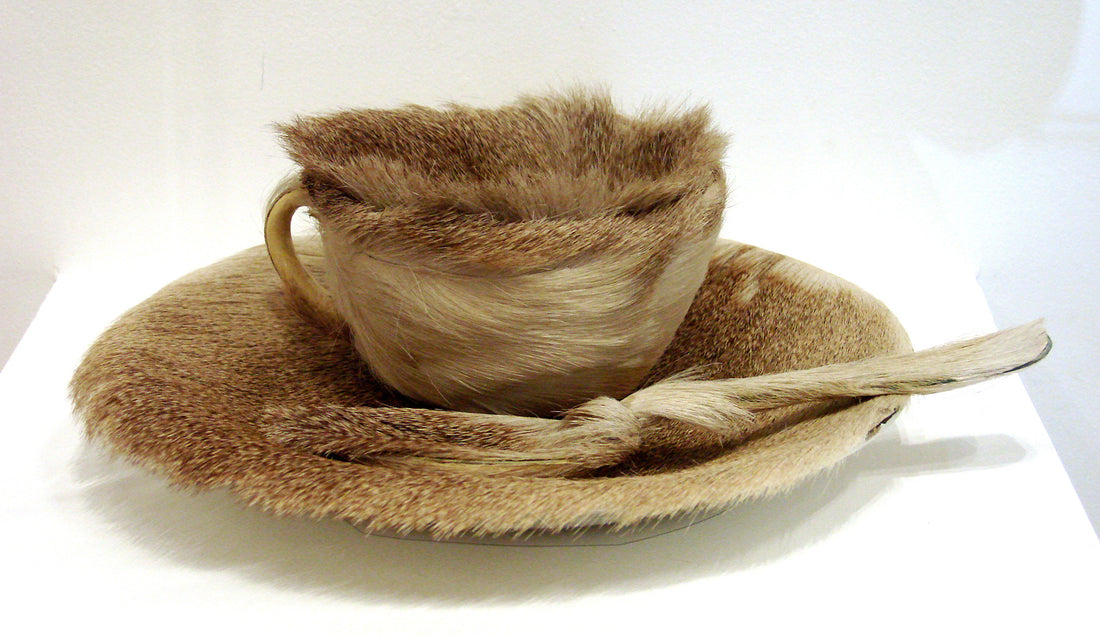
SURREALIST TEXTILE OBJECTS: MÉRET OPPENHEIM
Image: Object 1936 (fur-covered cup, saucer and spoon). Image courtesy of Museum of Modern Art (MoMA)
By Deborah Nash
“Beauty will be erotic-veiled, explosive-fixed, magical-circumstantial, or it will not be at all,” announced the father of Surrealism, André Breton. A Surrealist object that embodies this idea is Méret Oppenheim’s Object 1936. At only 3 inches high, the cup, saucer and teaspoon wrapped in speckled Chinese gazelle fur has an intense presence that goes well beyond size. The art historian Robert Hughes commented on its sexual power, which is apparent when one imagines holding: “…a hairy receptacle full of warm fluid …” and bringing it to one’s lips.
Another interpretation is the theme of animal and nature twinned with its opposite, refinement and civilisation. In the 1930s, fur was much more common in women’s clothing, with over-sized round fur collars featuring on dress coats, a way to charm up a plain garment. Here, fur is used to contradict the form it wraps, rendering it unusable.
Méret Oppenheim’s tableware made from fur was created following a conversation with Picasso and Dora Maar at a café in Paris. Picasso had noticed that the young Swiss-German artist was wearing a fur-lined bracelet and had joked that anything could be covered in fur. Oppenheim had replied, “Even this cup and saucer!” She called to the waiter for “A little more fur!” later buying the tea things to create Object.
Oppenheim (1913-1985) was only 23 at the time, and Object became one of the most celebrated of Surrealist artworks. It was exhibited in Paris in an inaugural exhibition of Surrealist sculptures, organised by Breton, and then purchased by Alfred Barr for the Museum of Modern Art, New York, where it was shown in Fantastic Art: Dada and Surrealism. 
Image: Pelzhandschuhe, (1936) mixed media. Image courtesy of Museum of Modern Art (MoMA)
Interested in fashion and wearable art, Oppenheim used fur to make an unwearable pair of gloves, Pelzhandschuhe, (1936) while also creating goat-suede gloves for Schiaparelli, decorated with a network of veins.
